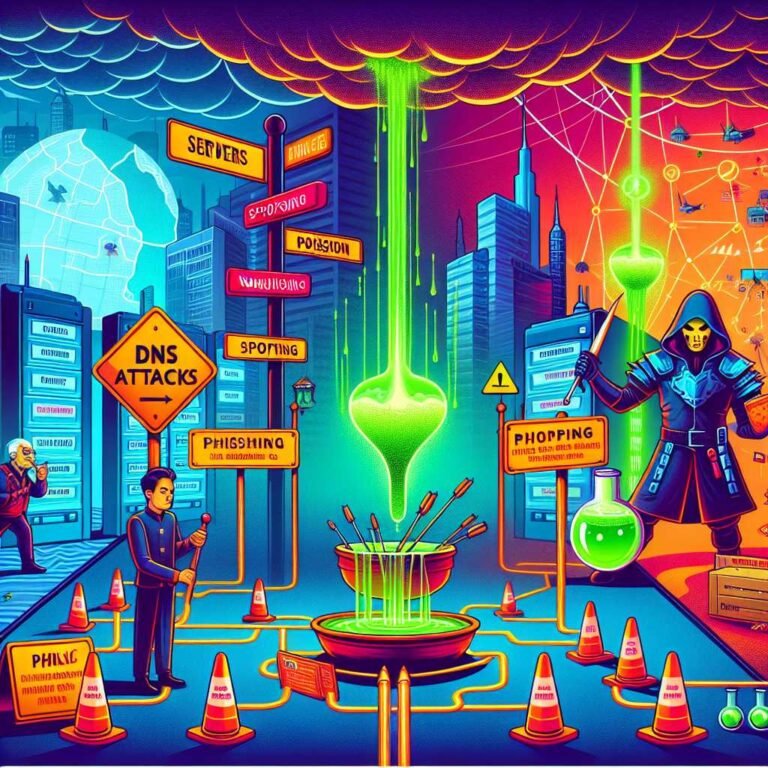GIAC Security Essentials (GSEC) 500 Practice Questions, 1st Edition (2025): The Definitive Prep Guide to Pass with Confidence
If you’re eyeing GIAC’s GSEC certification, you already know it’s a serious benchmark for hands‑on cybersecurity skill. But here’s the hard truth: most candidates don’t struggle because they “don’t know enough.” They struggle because they don’t know how the exam asks. That’s exactly where high‑quality practice questions make all the difference—especially when they mirror the real test format and explain the “why,” not just the “what.”
In this deep dive, we’ll break down how to use GIAC Security Essentials (GSEC) — 500 Practice Questions: 1st Edition (2025) to master exam‑worthy content faster, strengthen your decision‑making under pressure, and walk into test day with real confidence. You’ll get a complete study blueprint, a domain‑by‑domain breakdown, and evidence‑backed strategies for memory, speed, and accuracy. By the end, you’ll know whether this book belongs in your kit—and exactly how to get the most from it.
What the GSEC Certification Really Tests (and Why That Matters)
GSEC is a vendor‑neutral, foundational cybersecurity certification designed by GIAC. It validates that you can apply security concepts in real environments, not just recite definitions. Think analyzing logs, interpreting network traffic, hardening systems, and making risk‑informed decisions quickly.
A few essentials to know: – GSEC is a proctored exam, and GIAC periodically updates its format and passing requirements; always check the official page for the latest details. – The exam focuses on practical judgment, not trivia. You’ll see scenario‑driven questions with multiple plausible answers. – Domains span network security, cryptography, Linux and Windows security, identity and access management (IAM), incident response, and more.
For the most current policies, objectives, and exam specifics, go straight to GIAC’s official GSEC page: GIAC GSEC Certification.
Here’s why that matters: your prep should look like the test. That means practicing time‑boxed, scenario‑based questions that force you to choose between “good,” “better,” and “best” answers while applying core principles consistently.
Why Practice Questions Are the Shortcut to Mastery
There’s a reason top learners rely on active recall and spaced repetition: both are scientifically proven to boost retention and transfer of knowledge. High‑fidelity practice questions do three things at once: – Reveal gaps you didn’t know you had. – Train decision‑making under time pressure. – Build mental patterns so you spot the best answer faster.
Think of each question as a tiny lab. The right answer shows you what to do. The wrong options teach you what to avoid—and why. Over time, great explanations become your internal “tutor,” shaping how you analyze logs, prioritize controls, or evaluate crypto choices under real‑world conditions.
Inside the 500 Practice Questions — What You Actually Get
This 1st Edition (2025) focuses on clarity, relevance, and exam‑style authenticity. It’s built to feel like the real thing so your brain recognizes patterns on test day.
What stands out: – Domain coverage that mirrors GSEC objectives: network defense, TCP/IP analysis, cryptography concepts, IAM best practices, Linux primitives, Windows security, vulnerability management, and incident response workflows. – Question design that pushes reasoning, not rote memorization. Expect scenario‑based choices with distractors that reflect common misconceptions. – Clean, concise explanations. Each question breaks down not just the correct answer, but why alternatives fall short—perfect for quick learning loops. – Topic‑wise categorization. Drill by domain to strengthen weak areas, or mix sets to simulate exam conditions. – Exam‑style pacing. Time your sets to train for focus and endurance.
Want to try it yourself? Check it on Amazon.
How to Use This Book for Maximum ROI (A Simple System)
If you’re like most candidates, you don’t need more information; you need a structure that converts reading into outcomes. Use this framework:
1) Baseline assessment – Take a 50–75 question mixed set timed to 1–1.5 minutes per question. – Mark “guessed,” “unsure,” and “confident” answers; score honestly.
2) Targeted domain sprints – Spend 2–3 days per weak domain. – Drill 15–25 questions at a time. – After each set, read explanations thoroughly—especially for questions you got right by guessing.
3) Error log and recovery – Maintain a living list of misses and “near misses” with a 1–2 sentence explanation of the concept. – Re‑quiz on those areas 48 hours later to cement recovery.
4) Mixed‑mode simulations – End each week with a 75–100 question mixed block. – Analyze time spent per question and your error patterns (e.g., crypto parameters, Windows permissions, Linux logs).
5) Final week – Run two full‑length simulations. – Switch to light content review and focused re‑testing of errors every 24–36 hours.
Ready to upgrade your prep? Buy on Amazon.
7‑Day and 30‑Day Study Plans
You can pass on tight timelines if you commit to consistent daily reps. Choose the plan that fits your calendar and experience level.
7‑Day Accelerator (for experienced practitioners) – Day 1: Baseline mixed set; triage weak domains. – Days 2–5: Two domain sprints per day (AM/PM), 25 questions each; nightly mixed set of 30–40. – Day 6: Full mixed set of 100–120; review explanations deeply. – Day 7: Light review plus a timed 50‑question set; sleep early.
30‑Day Mastery Plan (for first‑timers or those returning after a gap) – Weeks 1–2: Daily 25–50 domain‑focused questions; build your error log; read explanations carefully. – Week 3: Alternate days: mixed sets (75–100) and domain fine‑tuning (25–30). – Week 4: Two full simulations; refine speed and accuracy; short daily refreshers on weak topics.
Pro tip: keep sessions short and intense—30–45 minutes beats a foggy two‑hour slog.
Specs, Editions, and Buying Tips (What to Look For)
When you shop for a GSEC practice book, verify three things: – Alignment with current GSEC objectives. GIAC updates domains; a 2025 edition should reflect the latest scope. – Explanation quality. Look for clear justifications and references to principles you can apply in the field. – Realistic difficulty. The sweet spot is “challenging but fair”—you should be stretched, not blindsided.
This 1st Edition (2025) is designed for speed and clarity, with domain tagging for targeted drills and clean explanations for fast review. Compare options here: See price on Amazon.
Deep Dive: The GSEC Domains You’ll Drill
Below is a practical tour of the core areas this book targets—and how to think during questions.
Network Security and TCP/IP
Expect items that test your ability to reason about ports, protocols, and common attack paths. You might need to identify why a given firewall rule allows unexpected traffic, or which packet capture implies a scan versus a misconfiguration. Focus on: – Stateful vs. stateless filtering – Common protocol behaviors (TCP flags, UDP quirks, ICMP types) – Secure baseline configs for routers and switches – Sniffing and spoofing indicators
A useful cross‑reference: the CIS Critical Security Controls for defensible network baselines.
Cryptography Fundamentals
You’ll often choose “best fit” algorithms or parameters for a scenario. Key skills: – Differentiating symmetric vs. asymmetric use cases – Hashing vs. encryption vs. encoding – TLS basics and common pitfalls (e.g., weak cipher suites) – Key management and rotation practices
If you need grounding in enterprise crypto policies, skim NIST SP 800‑53 controls on cryptographic protection.
Curious how these concepts are tested? View on Amazon.
Identity and Access Management (IAM)
Expect scenario questions about least privilege, role design, and authentication hardening. You should be fluent in: – MFA tradeoffs and common bypasses – Role‑based access control (RBAC) vs. attribute‑based (ABAC) – Password policy tuning that reduces risk without driving shadow IT – Privileged access patterns and session recording
Linux Security
Linux questions often require command‑line literacy. You might interpret log entries, audit sudo configurations, or recommend file permission changes. – Know file permissions and umask – Systemd logs vs. legacy logging – SSH hardening (keys, ciphers, server config) – Basic SELinux/AppArmor awareness
Windows Security
Windows items emphasize practical administration: Group Policy, NTFS permissions, local vs. domain policies, and logging. – Audit policy configuration for key events – UAC and credential hygiene – Hardening RDP and PowerShell remoting – Event log triage during incidents
Incident Response and Monitoring
GSEC expects you to apply the incident lifecycle—prep, detection, containment, eradication, recovery—without overreacting. That means: – Selecting the most effective first action – Preserving evidence while minimizing impact – Coordinating with stakeholders – Knowing when to escalate
For authoritative guidance, review NIST SP 800‑61r2 on Computer Security Incident Handling.
Vulnerability Management and Risk
These questions surface the difference between severity and risk, and how to prioritize with limited time. – CVSS vs. business context – Patch vs. mitigate decisions – Verification and re‑scan strategy – Reporting that drives action
To map questions to real‑world attacker behavior, browse MITRE ATT&CK; it helps you reason through plausible techniques behind an alert.
Common Mistakes This Book Helps You Avoid
- Studying facts instead of decisions: Memorization without scenarios leads to second‑guessing on test day.
- Overlooking explanations: The payoff is in the “why”; explanations turn misses into durable wins.
- Ignoring timing: Many candidates run out of time because they don’t practice the rhythm of elimination and commit.
- Not reviewing near misses: If you guessed right, you still need to learn the principle.
- Focusing only on one domain: GSEC is broad; build a balanced base before optimizing your strengths.
Support our work by shopping here: Shop on Amazon.
A Realistic Question‑Solving Method You Can Reuse
Here’s a simple, repeatable flow for every item: 1) Read the last sentence of the question first to understand the ask. 2) Scan the scenario for constraints (environment, role, policy, risk tolerance). 3) Eliminate obviously wrong answers quickly. 4) Choose between the final two by asking, “Which aligns best with principle X under constraint Y?” 5) If stuck, mark and move; protect your pacing.
This approach prevents rabbit holes and keeps your focus on the decision, not the distraction.
How to Build a Lean Review Stack Around the Book
Pair your question practice with just a few trusted references: – Secure configuration and policy: CIS Critical Security Controls – Incident response playbooks: NIST SP 800‑61r2 – Control frameworks and terminology: NIST SP 800‑53 – Web security common pitfalls: OWASP Top 10 – Threat behaviors and mapping: MITRE ATT&CK – Skill refreshers and fundamentals: SANS resources and SANS Cyber Aces
Use these sparingly—only when an explanation triggers a deeper question you can’t resolve.
Who This Book Is Best For
- First‑time GSEC candidates who want structure and exam‑like reps.
- Practitioners with experience who need to translate know‑how into test‑ready patterns.
- Re‑certifiers who want a fast diagnostic and targeted refresh on updated domains.
- Managers and team leads using GSEC as a baseline for training and internal readiness.
If you learn best by doing—and you prefer clear, concise explanations over dense textbook chapters—you’ll get outsized value.
Final Week Playbook: From 70% to Test‑Ready
- Two full mixed simulations under realistic timing.
- A lightweight “errors only” deck you scan daily.
- A 24‑hour pre‑exam routine: 30 questions in the morning, 30 in the evening, then rest.
- Logistics check: test center or remote proctor requirements, ID, environment, and policies. For current policies, always verify on the GIAC GSEC Certification page.
Last mile mindset: accuracy over speed early, speed over perfection late. Trust your trained heuristics.
Want a clean, exam‑aligned bank to run those last two simulations? See price on Amazon.
FAQ: GSEC Prep Questions People Also Ask
Q: How hard is GSEC compared to Security+? A: GSEC is generally more hands‑on and scenario‑driven than Security+. If you have real operational experience, you’ll find the logic approachable; if you’re new, expect a steeper practical learning curve.
Q: How many hours do I need to study? A: Most candidates succeed with 40–80 focused hours, spread over 3–5 weeks. If you’re new to IT/security, budget more time for fundamentals and lab practice.
Q: Are practice questions enough to pass? A: Strong question banks are the fastest way to learn how the exam asks, but you should still review core concepts the explanations surface—especially networking, IAM, and OS hardening.
Q: Does GIAC publish the exact number of questions and passing score? A: GIAC exam details and passing requirements can change; check the official GIAC GSEC Certification page for current specifics.
Q: Should I memorize ports, protocols, and crypto specifics? A: Yes, but focus on application. Know common ports and protocol behaviors, and understand how crypto choices impact security and performance in real scenarios.
Q: What’s the best way to review misses? A: Capture the principle behind each miss in a simple error log, then re‑test the concept after 24–48 hours. This converts “I knew that” into “I won’t miss that again.”
Q: Can labs help, or should I stick to questions? A: Labs help solidify understanding, especially for Linux/Windows hardening and network analysis. Combine light lab work with timed question sets for best results.
Q: How often is GSEC updated? A: GIAC periodically updates objectives to reflect current practices. Always align your study materials with the latest objective list on GIAC’s site.
The Bottom Line
If you want to pass GSEC without guesswork, train the way you’ll be tested: with realistic questions, tight timing, and crystal‑clear explanations that turn misses into mastery. The 500‑question 1st Edition (2025) is built for exactly that—domain‑accurate coverage, exam‑style nuance, and explanations that teach you how to think like a security pro. Make a plan, track your misses, run mixed simulations, and protect your pacing. You’ll build the confidence that comes from reps—not luck. And if you found this helpful, stick around for more up‑to‑date guides and study roadmaps that keep your skills sharp and your career moving forward.
Discover more at InnoVirtuoso.com
I would love some feedback on my writing so if you have any, please don’t hesitate to leave a comment around here or in any platforms that is convenient for you.
For more on tech and other topics, explore InnoVirtuoso.com anytime. Subscribe to my newsletter and join our growing community—we’ll create something magical together. I promise, it’ll never be boring!
Stay updated with the latest news—subscribe to our newsletter today!
Thank you all—wishing you an amazing day ahead!
Read more related Articles at InnoVirtuoso
- How to Completely Turn Off Google AI on Your Android Phone
- The Best AI Jokes of the Month: February Edition
- Introducing SpoofDPI: Bypassing Deep Packet Inspection
- Getting Started with shadps4: Your Guide to the PlayStation 4 Emulator
- Sophos Pricing in 2025: A Guide to Intercept X Endpoint Protection
- The Essential Requirements for Augmented Reality: A Comprehensive Guide
- Harvard: A Legacy of Achievements and a Path Towards the Future
- Unlocking the Secrets of Prompt Engineering: 5 Must-Read Books That Will Revolutionize You







